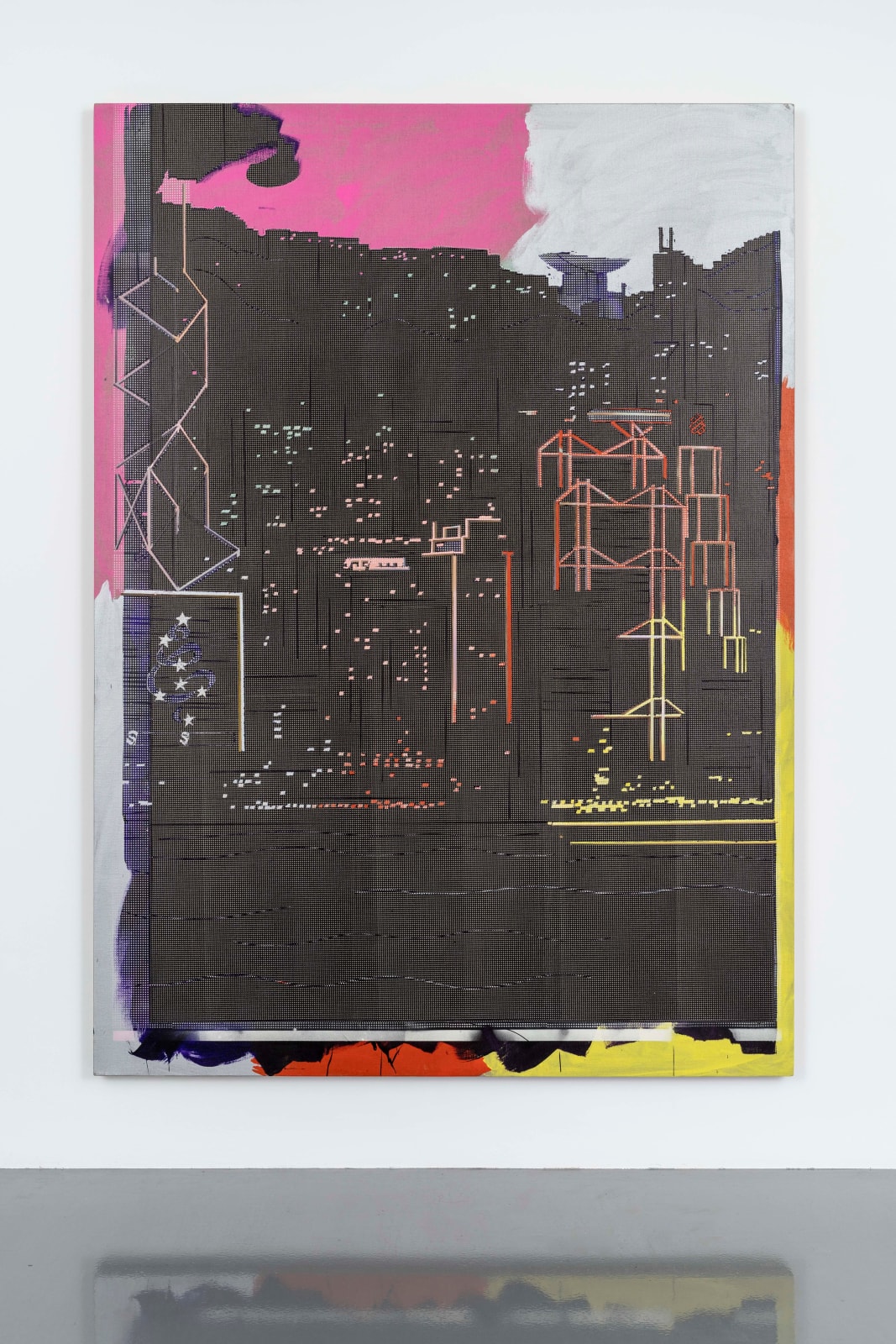



Cui Jie
Victoria Harbour, 2019
Acrylic and spray paint on canvas
250 x 180 cm
98 3/8 x 70 7/8 in
98 3/8 x 70 7/8 in
Copyright The Artist
Further images
The Victoria Harbour in its totality includes the Peak Tower at the top to the right, the Bank of China tower to the left hand side, the HSBC Main Building...
The Victoria Harbour in its totality includes the Peak Tower at the top to the right, the Bank of China tower to the left hand side, the HSBC Main Building to the right, and the city at night. The Harbour has long been instrumental in the development of Hong Kong, as its strategic location on the South China Sea established it as a trading centre within the British Empire. It now acts as a major tourist attraction of Hong Kong, with thousands of tourists clamouring to take in the view from the Peak Tower; at the same time the presence of the HSBC building ensures its remaining status as an outpost of the British economy, and Hong Kong as a city where the East meets the West.
Regarding the method and style, lines have always been important to Cui Jie’s paintings. In previous works, the lines form the architectures themselves (perspectives and silhouettes); however they also destroy an overall perspective that is three-dimensional in nature. This brings the composition back to an economy of colours and shapes that is two-dimensional in nature (when the lines forming the architectures and the sculptures interweave and reconstruct one another). In the recent paintings, the lines and dots are organised as such, giving birth to each other while simultaneously erasing each other. A moire pattern forms, making the lines seem as though they are in motion, appearing and disappearing in the matrix of dots. This gives the effect of the buildings as weightles against gravity, and screen-like, creating a landscape that is gestalt.
Regarding the method and style, lines have always been important to Cui Jie’s paintings. In previous works, the lines form the architectures themselves (perspectives and silhouettes); however they also destroy an overall perspective that is three-dimensional in nature. This brings the composition back to an economy of colours and shapes that is two-dimensional in nature (when the lines forming the architectures and the sculptures interweave and reconstruct one another). In the recent paintings, the lines and dots are organised as such, giving birth to each other while simultaneously erasing each other. A moire pattern forms, making the lines seem as though they are in motion, appearing and disappearing in the matrix of dots. This gives the effect of the buildings as weightles against gravity, and screen-like, creating a landscape that is gestalt.



